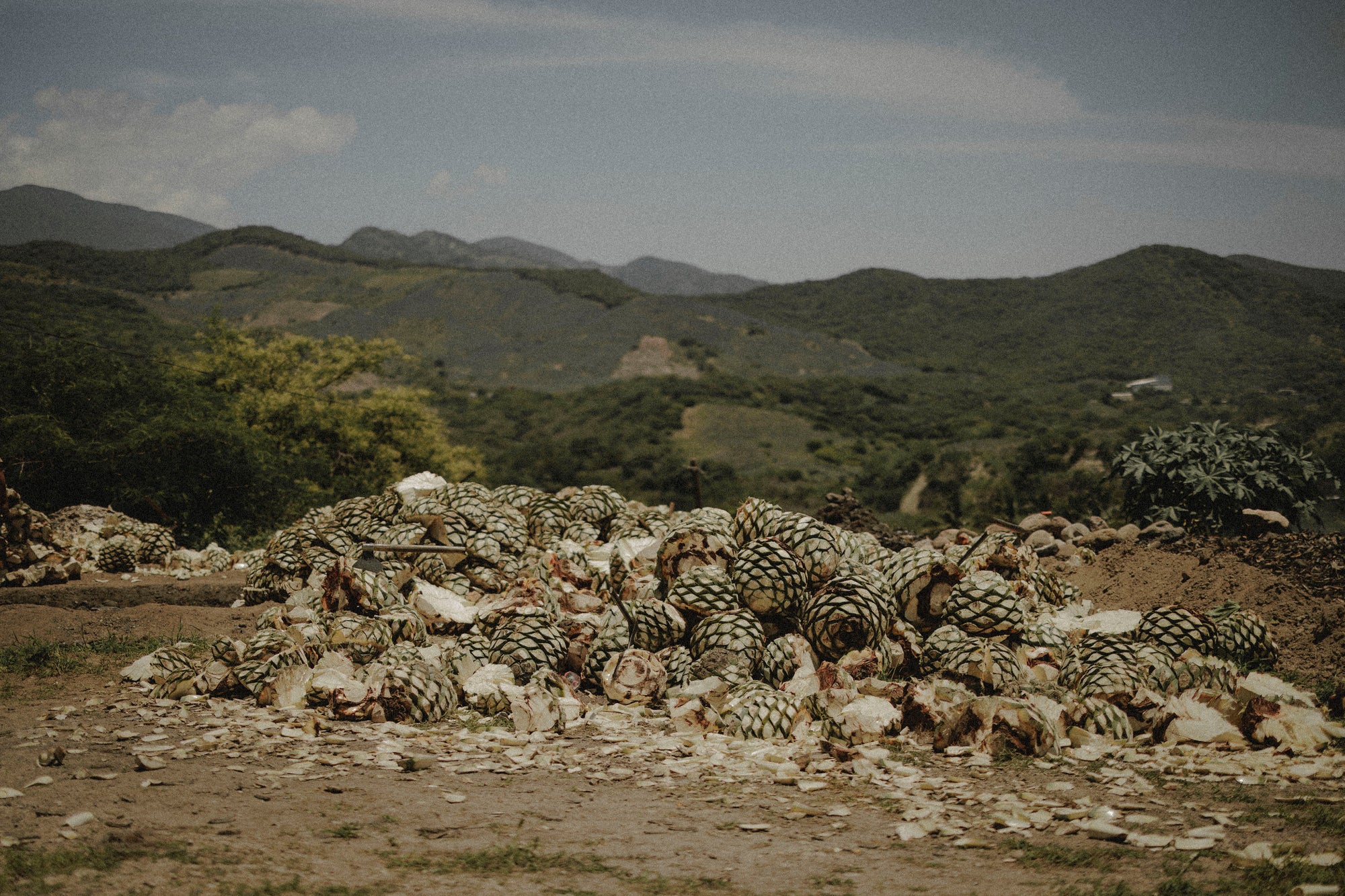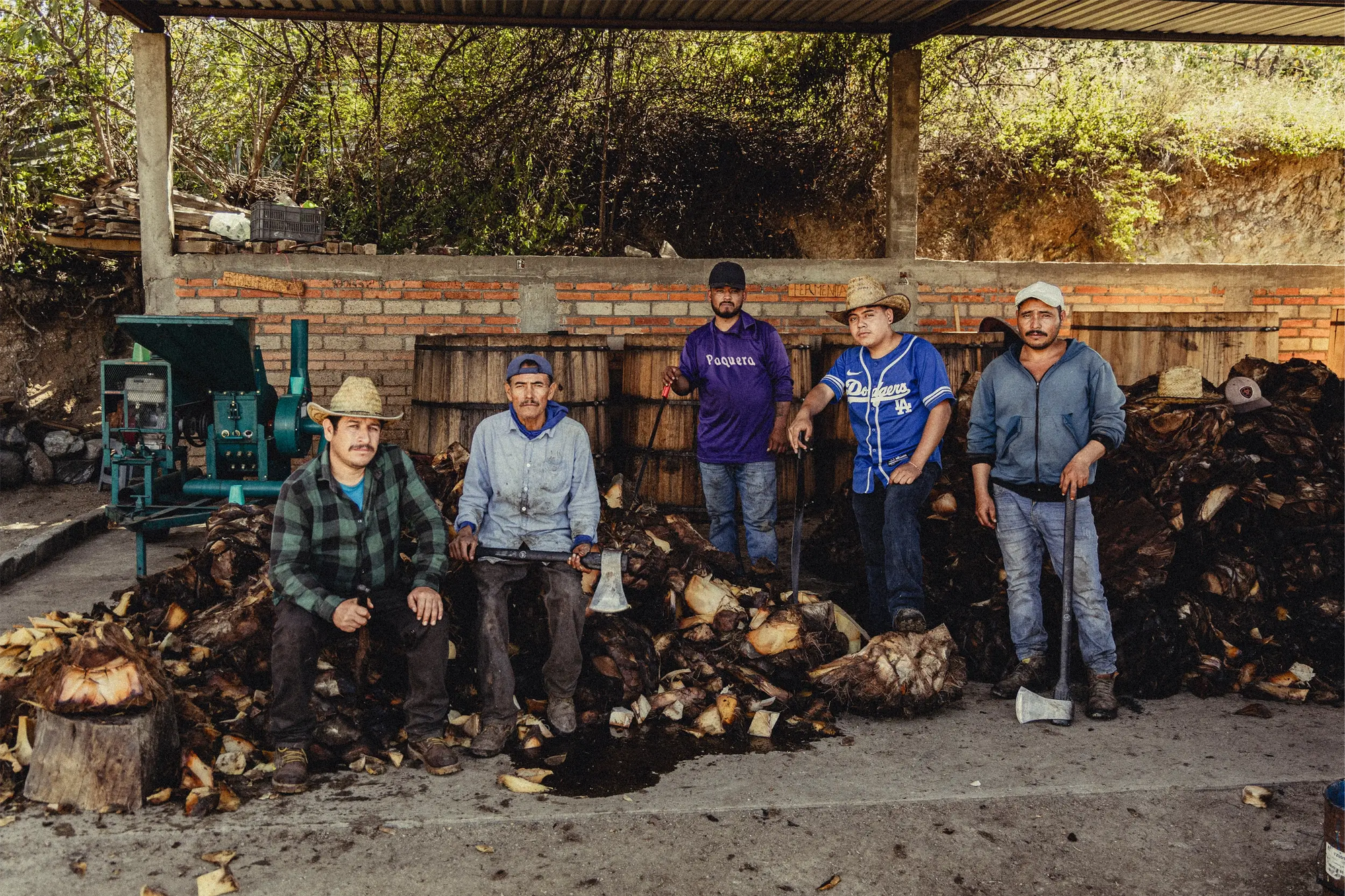

The Parallels Between Mezcal and Fine Wine
1. What would you both say is the fundamental similarity between mezcal and fine wine?
María (Paquera): At Paquera, we see mezcal as an agricultural expression of time and place, just like fine wine. Both are products where terroir, varietal, and the hand of the maker define the final character.
Jean-Luc: Exactly. Wine’s terroir is mirrored in mezcal by the specific agave species, the soil composition, and microclimate. Both result in bottles that are non-replicable outside their origin.
2. How do production traditions compare?
Jean-Luc: Winemaking has centuries of tradition layered into techniques that remain artisanal despite industrial scale. Barrel fermentation, wild yeasts, biodynamics – all preserve the original craft.
María (Paquera): In mezcal, we maintain ancestral processes like earthen pit roasting, stone tahona crushing, and wild fermentation. Even Paquera’s modern expansions never abandon those artisanal roots, much like family domaines in Burgundy refuse to mechanize critical steps.
3. Can mezcal’s agave varietals be compared to wine grapes?
María (Paquera): Absolutely. Espadín, Tobalá, Tepeztate, Madrecuixe – each agave species is akin to Chardonnay, Pinot Noir, Syrah, or Nebbiolo. They carry intrinsic flavors and structure reflective of species, soil, and maturity.
Jean-Luc: That is the same lens we use for wine. A grape’s inherent profile is transformed but not overridden by the maker, just as the agave speaks first in mezcal.
4. How does aging influence both products?
Jean-Luc: In wine, oak ageing integrates tannins and builds structure while micro-oxygenation softens youth. In mezcal, ageing (reposado, añejo) introduces vanilla, caramel, and wood spices.
María (Paquera): Correct, though mezcal purists often prefer unaged (joven) expressions to experience agave’s raw essence, similar to lovers of unoaked Chablis or Muscadet valuing purity over barrel influence.
5. Do both products reflect climate change in their production challenges?
María (Paquera): Definitely. Agave takes 7-25 years to mature, and rainfall shifts, fungal pressures, and rising temperatures affect sugar accumulation and disease resistance.
Jean-Luc: The parallel is direct. Vineyards face drought stress, heat spikes, altered ripening periods. Both mezcal and wine must adapt farming and harvest strategies without compromising heritage.
6. How important is the role of the producer?
Jean-Luc: In wine, the producer’s philosophy – organic, biodynamic, minimal intervention – shapes the outcome. Domaine Leroy vs. Jadot in Burgundy can be like two entirely different worlds.
María (Paquera): Similarly, mezcaleros are artists. Paquera works with specific maestro mezcaleros whose roast temperatures, fermentation lengths, and distillation cuts define their signature. Producer reputation, as with fine wine, drives consumer trust and valuation.
7. Is terroir marketing relevant to both?
María (Paquera): Mezcal’s Denomination of Origin protects regions like Oaxaca, Guerrero, Durango. Single village designations are growing, akin to sub-appellations in wine.
Jean-Luc: Terroir is the ultimate marketing narrative for fine wine. Consumers pay thousands for Grand Cru vineyard provenance. Mezcal, with micro-terroirs in Sierra Mixe or Miahuatlán, mirrors this potential.
8. How does each category build connoisseurship?
Jean-Luc: Wine education focuses on varietal identification, region, vintage variation, and pairing philosophy.
María (Paquera): Mezcal connoisseurship is developing along similar lines – knowing species, region, producer, and process. Paquera hosts tastings focusing on sensory training, like verticals or horizontals in wine, but for Espadín from different terroirs.
9. How do tasting notes compare between mezcal and wine?
María (Paquera): Mezcal’s tasting notes include vegetal, mineral, herbal, smokey, floral, and earthy profiles. Espadín often carries roasted agave sweetness with citrus oils, while Tobalá can be intensely floral and complex.
Jean-Luc: That approach is identical in wine. We note acidity, tannin, aroma families (floral, fruit, spice, mineral). Mezcal tasting notes are equally nuanced, demanding trained palates and descriptive precision.
10. Finally, do you see mezcal achieving the same cultural status as fine wine?
Jean-Luc: Yes, if it continues positioning itself through origin, authenticity, and storytelling, not simply as “another tequila.” Wine built cultural capital over centuries; mezcal has a similar foundation ready to be globally recognized.
María (Paquera): I agree. Paquera’s mission is to showcase mezcal as more than a spirit – it’s culture, agriculture, and human craft in a bottle. The parallel with fine wine is not aspirational, it is inherent.


